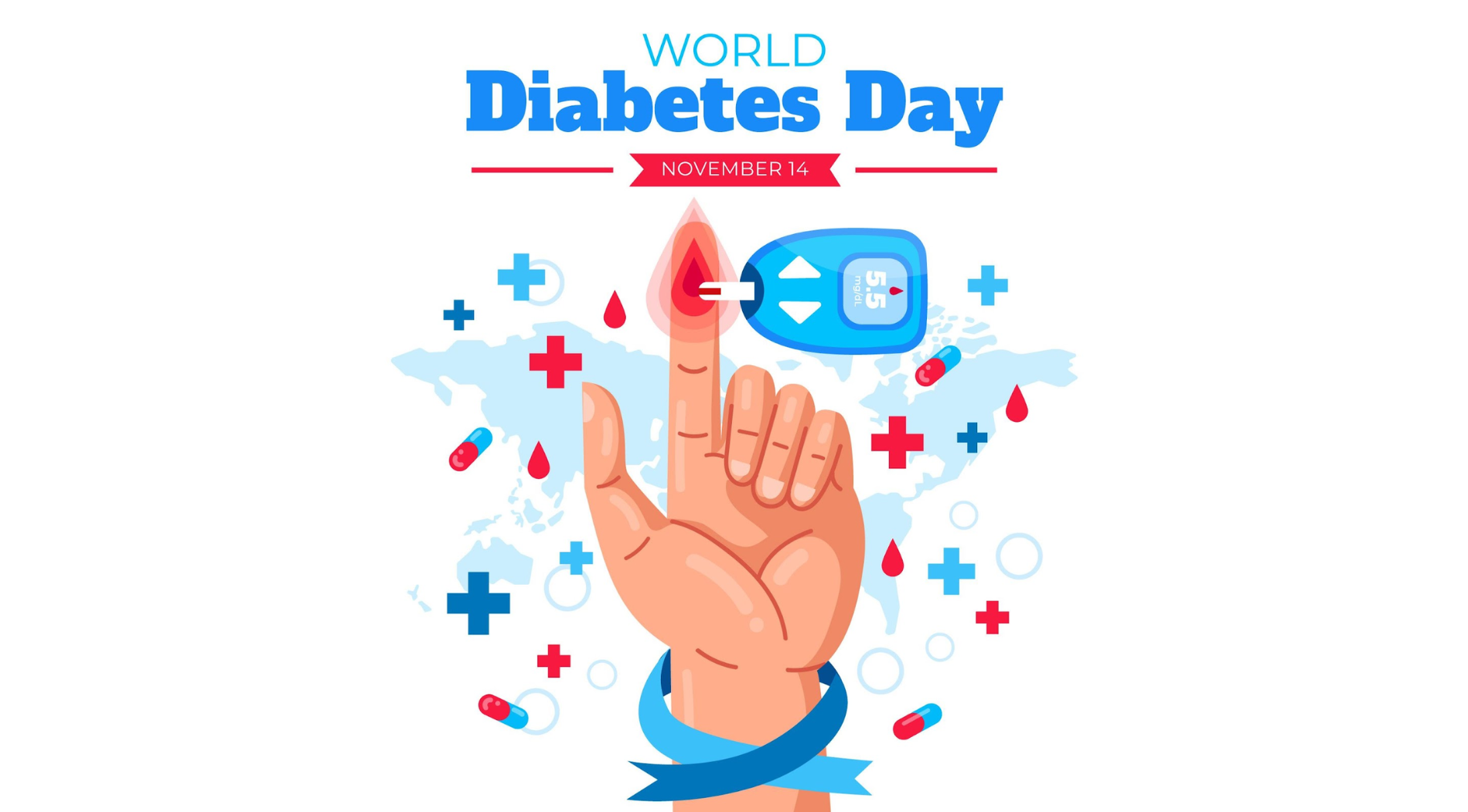World Diabetes Day (GS Paper 2, Health)

Context
- World Diabetes Day (WDD) is observed annually on 14 November to raise awareness about the growing global prevalence of diabetes, its impact on health, and the importance of preventive measures.
- This day is dedicated to educating people about diabetes symptoms, management strategies, and available treatment options, emphasizing the need for early diagnosis and improved healthcare for those affected by the disease.
- WDD is one of the largest global campaigns for diabetes awareness, organized by the International Diabetes Federation (IDF) in collaboration with the World Health Organization (WHO).
- The day is marked in over 160 countries, reaching more than 1 billion people worldwide through campaigns, advocacy, and education efforts.
Understanding Diabetes
Diabetes is a chronic condition that occurs when the body is unable to process glucose properly, either because it doesn't produce enough insulin (as in Type 1 diabetes) or because it becomes resistant to insulin (as in Type 2 diabetes). There are three main types of diabetes:
- Type 1 Diabetes: The body does not produce insulin, which is crucial for metabolizing glucose.
- Type 2 Diabetes: The body either becomes resistant to insulin or does not produce enough insulin.
- Gestational Diabetes: This type occurs during pregnancy and typically resolves after childbirth.
If left unmanaged, diabetes can lead to severe complications such as cardiovascular disease, nerve damage, kidney problems, skin infections, and mental health issues like depression.
Importance of World Diabetes Day
- Diabetes is an increasingly serious global health issue.
- According to the International Diabetes Federation (IDF), 67 lakh deaths were attributed to diabetes in 2021, and approximately 537 million people worldwide were living with the condition.
- By 2030, this number is expected to rise to 643 million, and to 783 million by 2045.
- A particularly concerning issue is the high percentage of undiagnosed cases, particularly in Type 2 diabetes.
- The IDF estimates that about 44% of adults with diabetes (around 240 million people) are undiagnosed, and 54.1 crore adults are at risk of developing Type 2 diabetes, mainly due to lifestyle factors and lack of early diagnosis.
- Additionally, 10.2 lakh teenagers (ages 0-19) are now affected by Type 2 diabetes, a condition that was previously more common in adults.
- Moreover, 2.1 crore live births are affected by hyperglycemia during pregnancy, posing risks to both mother and child.
- In 2021, 9% of global health expenditure was allocated to diabetes care, underscoring the economic burden of this disease.
- World Diabetes Day provides a critical platform to promote better access to diabetes care, highlight preventive measures, and educate the public on managing the disease effectively.
World Diabetes Day 2024 Theme: "Diabetes and Well-being"
- The theme for World Diabetes Day 2024-26 is "Diabetes and well-being."
- This theme highlights the importance of ensuring that people with diabetes not only manage their blood sugar but also maintain overall well-being.
- The day encourages a more comprehensive approach to diabetes care, considering the physical, mental, and emotional challenges faced by people with diabetes in their daily lives.
- Managing diabetes involves more than just controlling blood sugar levels; it requires resilience and responsibility in all aspects of life, from home to work to school.
- Mental well-being is a key focus, as people with diabetes often experience stress and emotional strain in addition to physical health challenges.
History of World Diabetes Day
- World Diabetes Day was established in 1991 by the International Diabetes Federation (IDF) and the World Health Organization (WHO).
- It was officially recognized by the United Nations (UN) in 2006, under UN Resolution 61/225.
- The date, 14 November, was chosen to commemorate the birthday of Sir Frederick Banting, who co-discovered insulin in 1922 alongside Charles Best—a breakthrough in the treatment of diabetes.
- In 2007, the Blue Circle Logo was introduced as a global symbol for diabetes awareness, representing the collaboration of global communities working together to fight diabetes.
Preventive Measures to Manage Diabetes
Type 2 diabetes, in particular, can often be prevented or managed through lifestyle changes. According to the International Diabetes Federation, over 54.1 crore adults are at risk of developing Type 2 diabetes. Preventive measures include:
- Adopting a healthy diet: Avoiding excess sugar and refined carbohydrates, eating smaller, regular meals, and focusing on foods with a low glycemic index.
- Regular physical activity: Engaging in at least 30 minutes of exercise daily to improve insulin sensitivity.
- Quitting smoking: Smoking increases insulin resistance, so it is crucial to stop.
- Maintaining a healthy weight: Keeping blood pressure, cholesterol, and blood sugar levels in check can significantly reduce the risk of diabetes.
- Drinking water instead of sugary beverages: This helps in managing blood sugar levels and reducing calorie intake.
- Monitoring health regularly: Regular health checks for blood glucose, cholesterol, and blood pressure can help with early detection and prevention.
Conclusion
- World Diabetes Day serves as an essential reminder of the growing global health challenge posed by diabetes.
- By raising awareness, educating the public, and promoting preventive measures, we can work together to reduce the burden of this chronic disease.
- With proper care and early intervention, people with diabetes can lead healthy, fulfilling lives.
- The theme of "Diabetes and well-being" in 2024 highlights the importance of a holistic approach to diabetes management, ensuring both physical and mental well-being for those affected by the disease.


